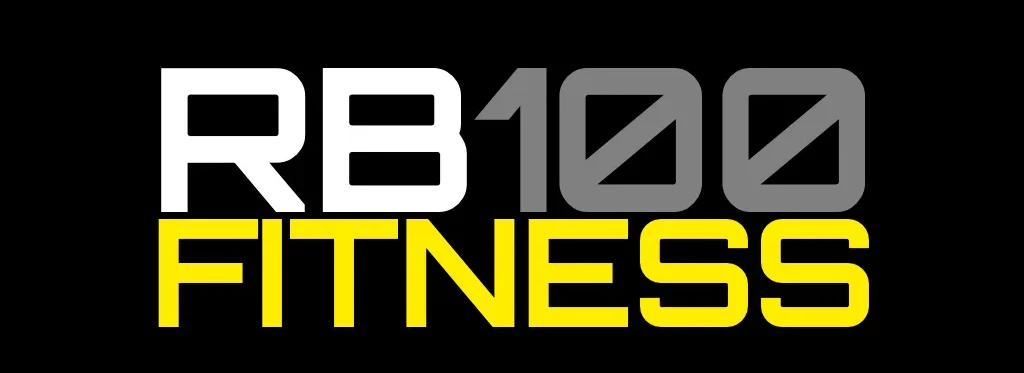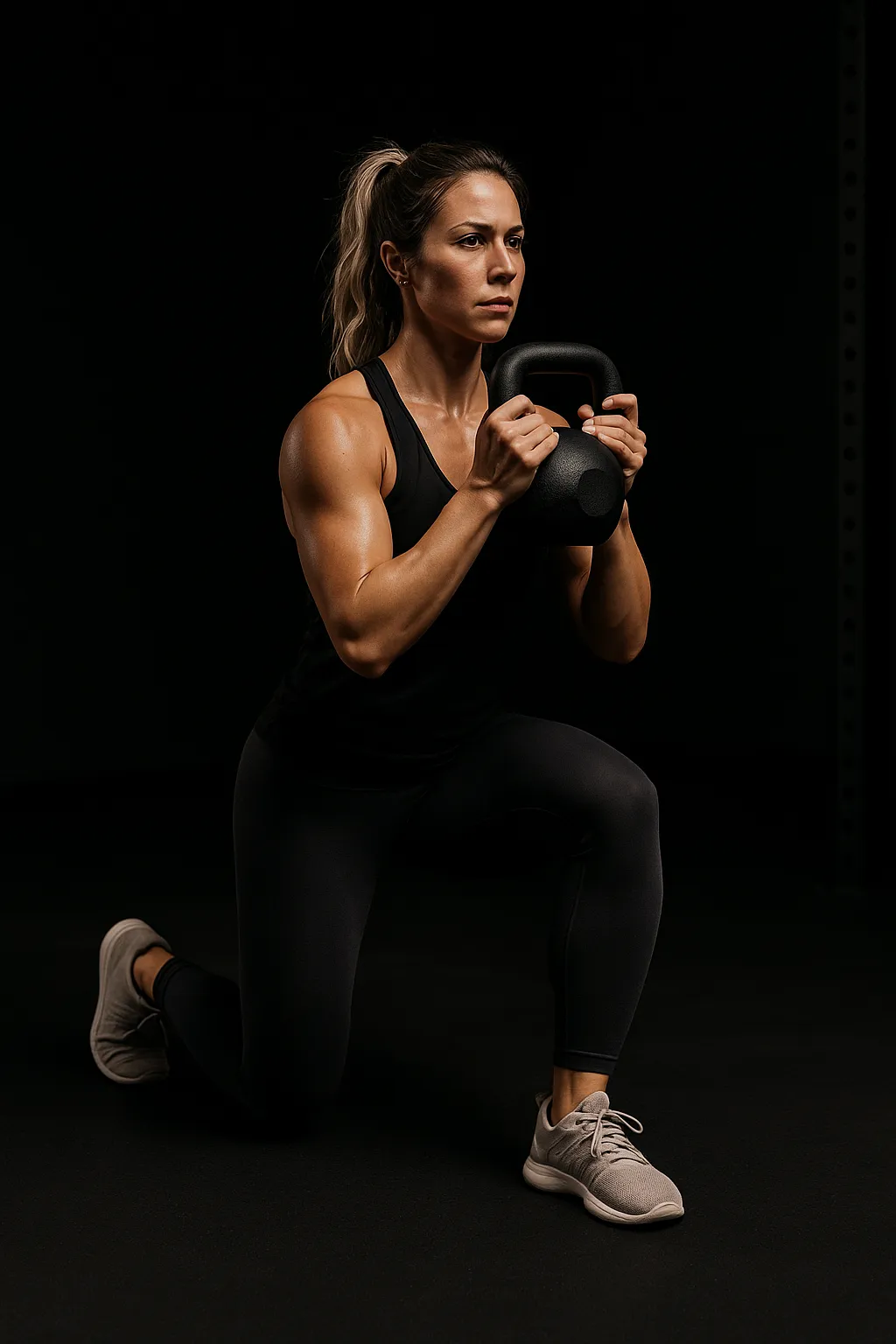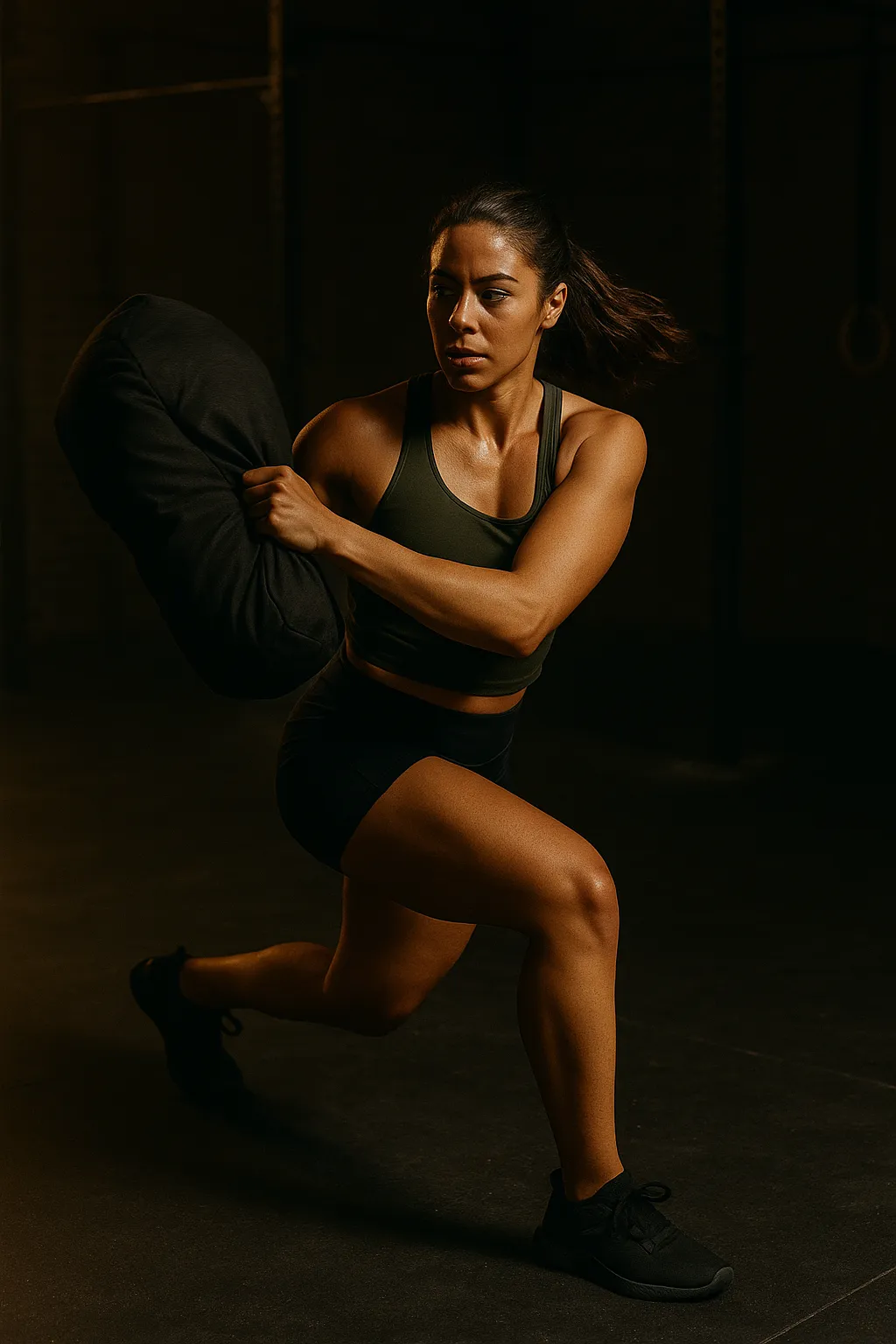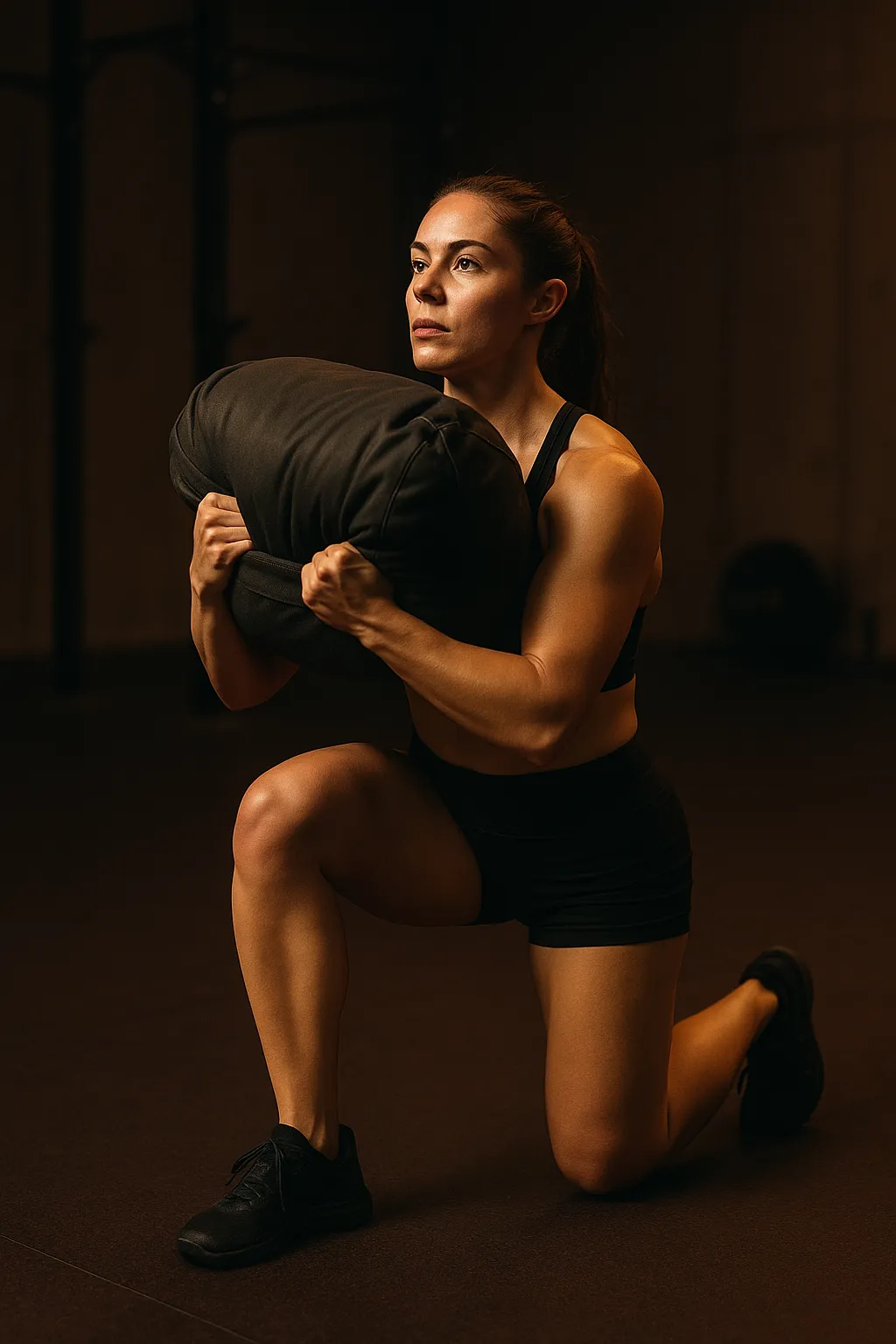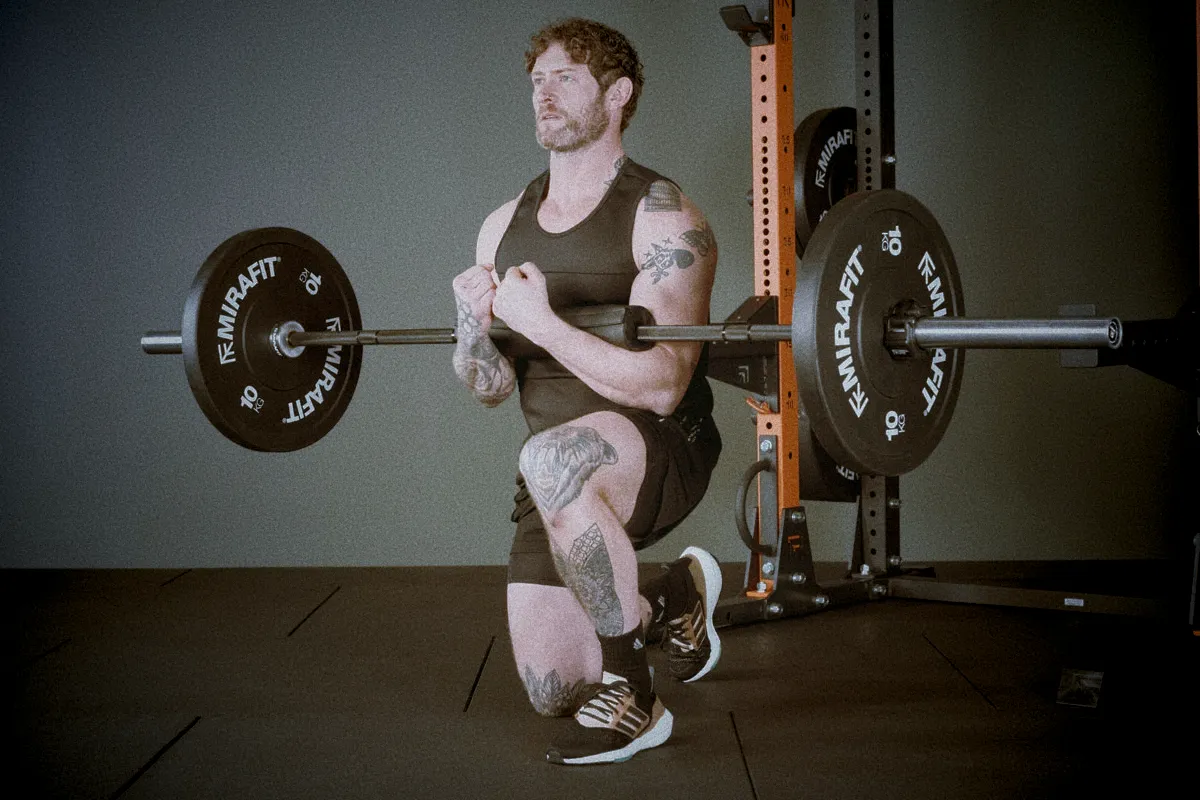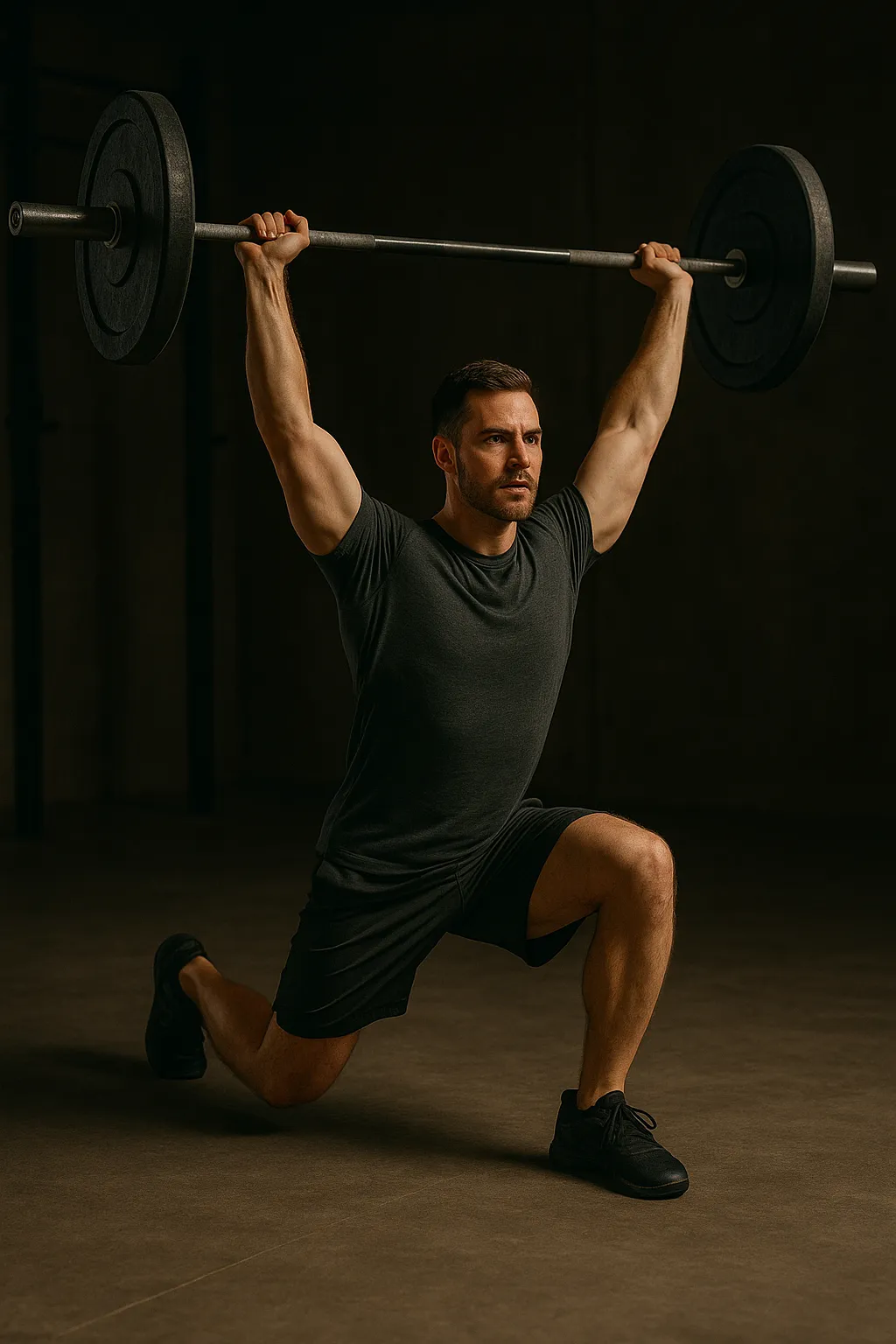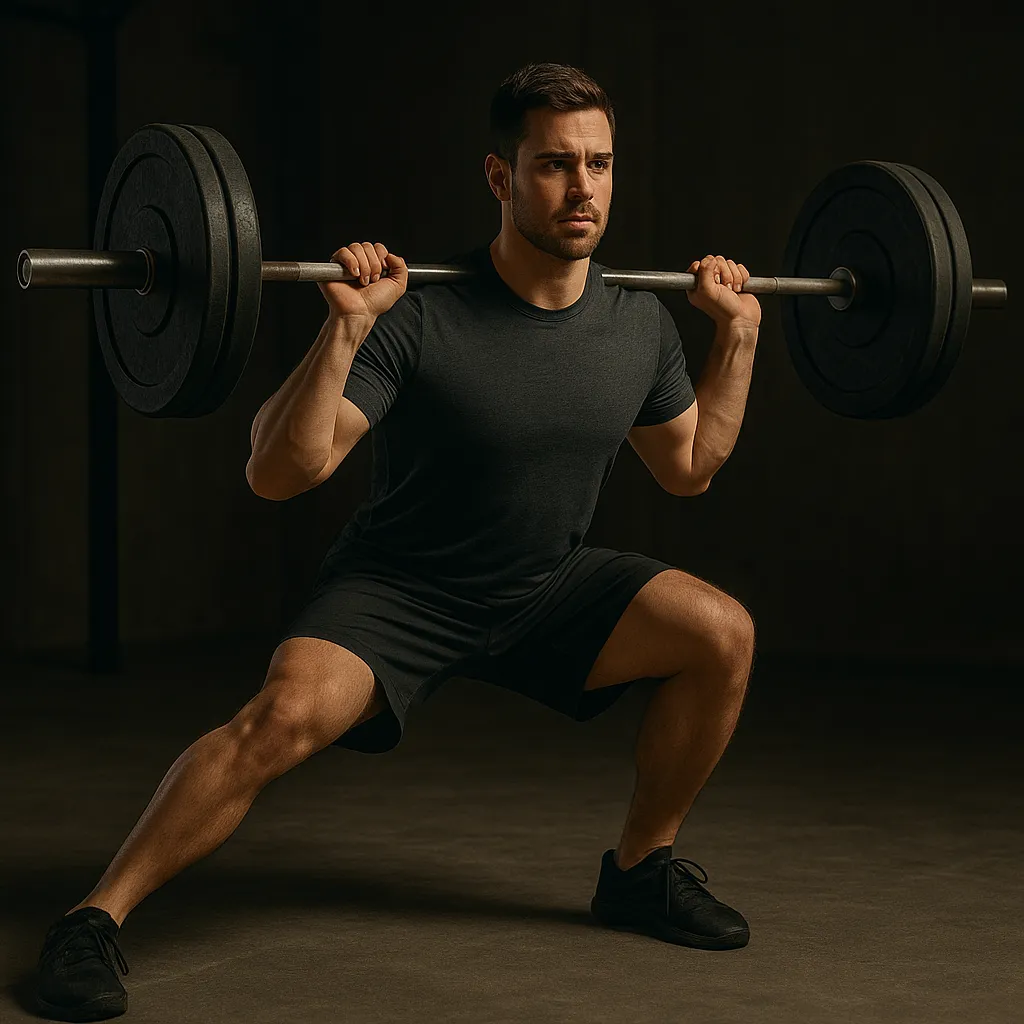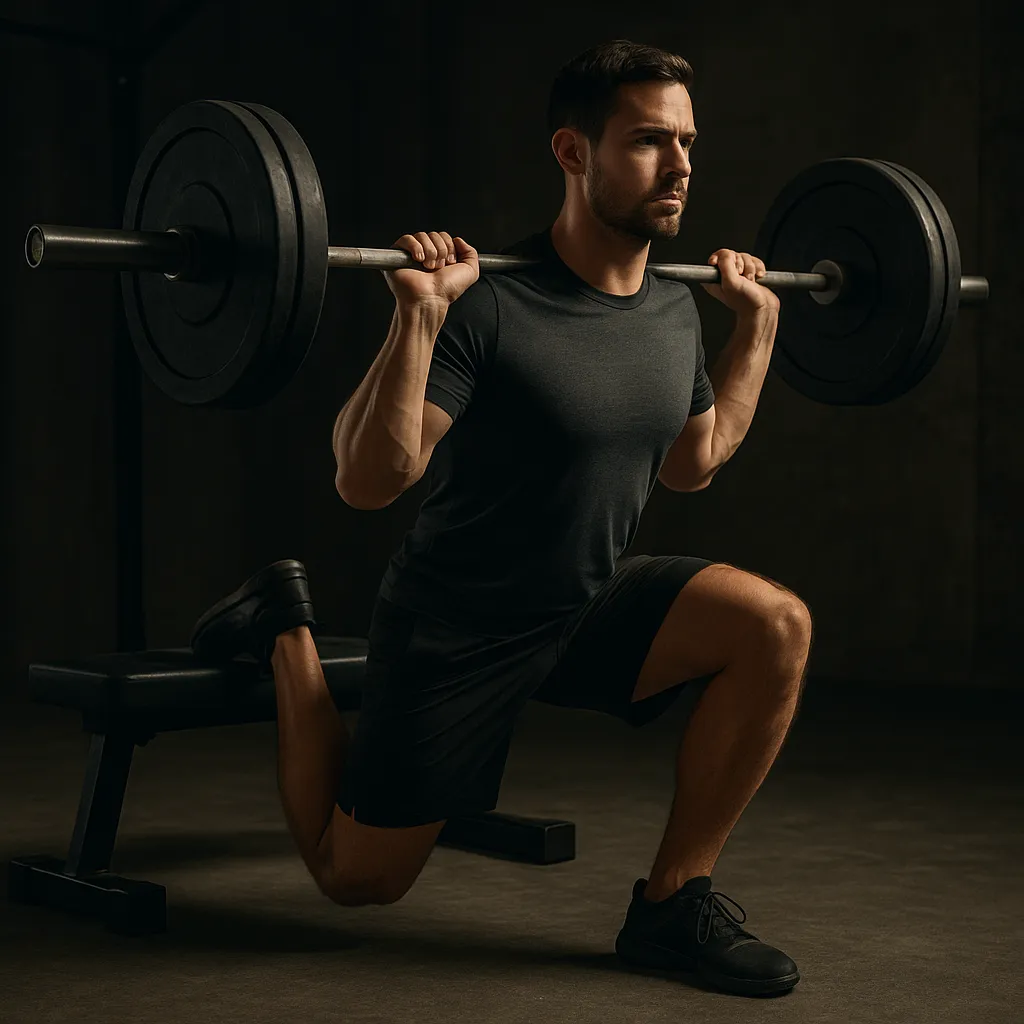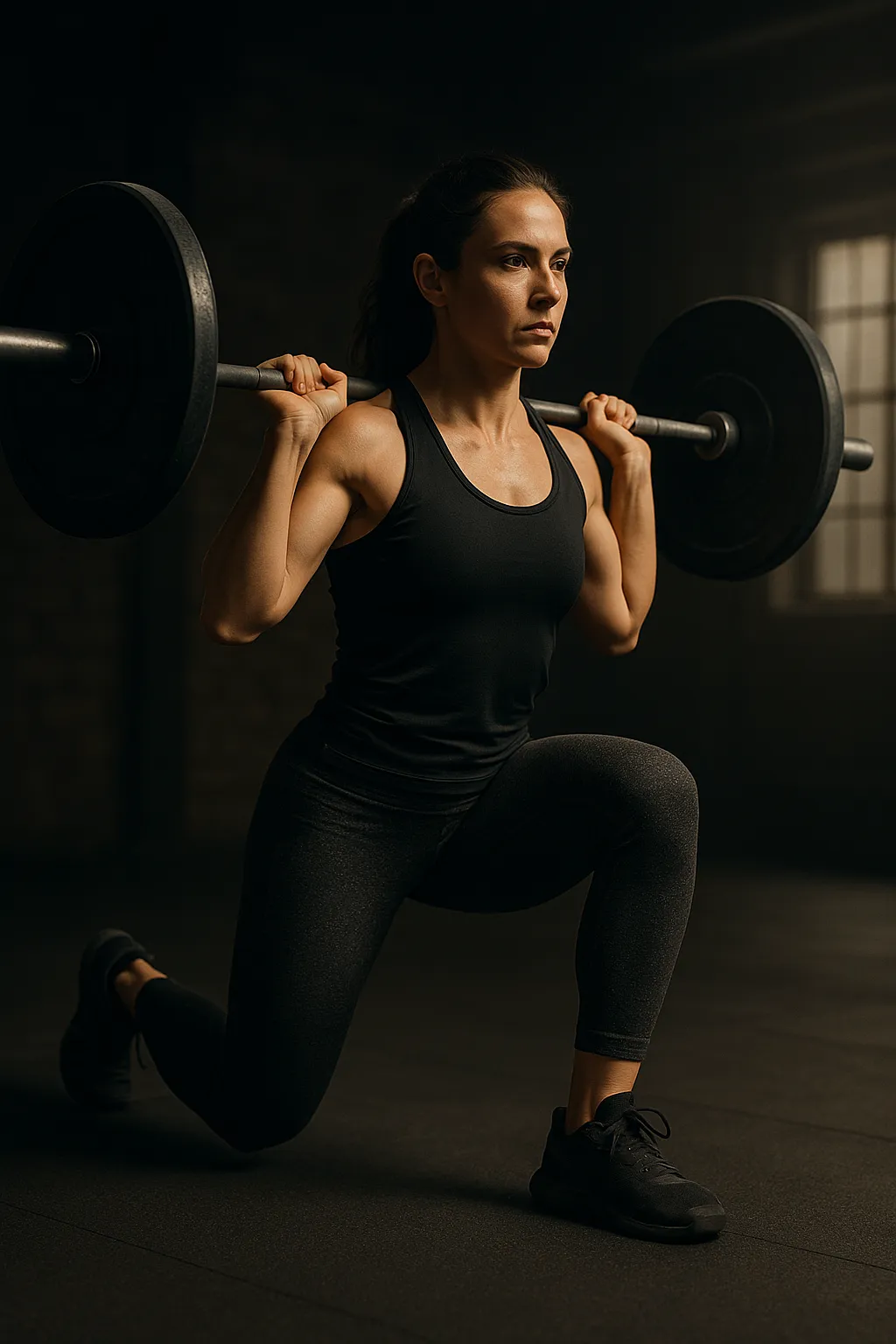Exercise Facts
| Movement Pattern | Lunge |
|---|---|
| Muscle Group | Core, Glutes, Hamstrings, Quads |
| Equipment | Dumbbells |
| Environment | Gym, Home |
| Skill Level | Beginner, Intermediate |
| Series | Dumbbell Lower Body Series |
Overview
Dumbbell lunges are an effective unilateral exercise that develop lower-body strength, balance, and coordination. By training one leg at a time, lunges highlight and correct muscular imbalances that can be masked in bilateral lifts like squats. Adding dumbbells increases the load and challenge, making them an excellent tool for both strength and conditioning.
To perform a lunge, hold a dumbbell in each hand, step forward, and lower until the back knee nearly touches the floor while keeping the torso upright. Drive back through the front leg to return to standing. Key coaching points include taking a long enough stride to avoid the knee shooting forward, keeping the front shin vertical, and maintaining core stability throughout.
Lunges target the quads and glutes primarily, with hamstrings and core contributing for stability. They also challenge balance, which builds proprioception and athletic control. Programming options are versatile: use sets of 8–12 for hypertrophy, heavy low-rep sets for strength, or walking lunges for conditioning. In an RB100 challenge, completing 100 total lunges (50 per leg) is a test of both endurance and mental focus.
Common errors include short steps, excessive forward lean, or knees caving inward. Regressions like bodyweight lunges or split squats can help beginners, while advanced variations such as overhead or deficit lunges add progression.
Because lunges mimic athletic movement patterns like running and cutting, they transfer well to sport performance. They are a valuable addition to any training plan, whether for strength, endurance, or injury prevention.

Setup (Steps)
Hold dumbbells at sides, feet together.
Execution (Steps)
Step forward, lower until back knee nearly touches ground, drive back to start.
Coaching Cues
“Step long enough.” “Front shin vertical.” “Stay upright.”
Common Faults & Fixes
• Front knee caving → Press knee out.
• Small steps → Lengthen stride.
• Leaning forward → Keep torso tall.
Programming Ideas
• Strength: 4×12 steps each leg.
• Conditioning: 50 reps for time.
• RB100: 100 total walking lunges.
Variations
Reverse lunges, overhead DB lunges.
Regressions
Bodyweight lunges.
Standards & Competition Notes
Back knee close to ground, front leg at ~90°.
Safety Notes
Keep balance; avoid hyperextending knees.
